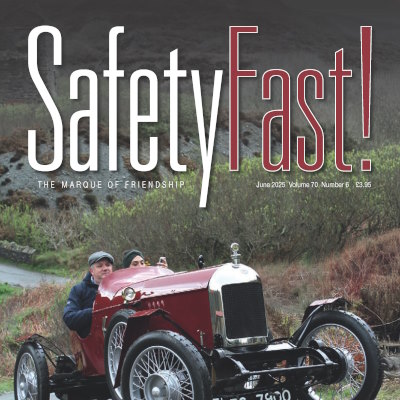Small Wonders Part I
Reproduction in whole or in part of any article published on this website is prohibited without written permission of The MG Car Club.
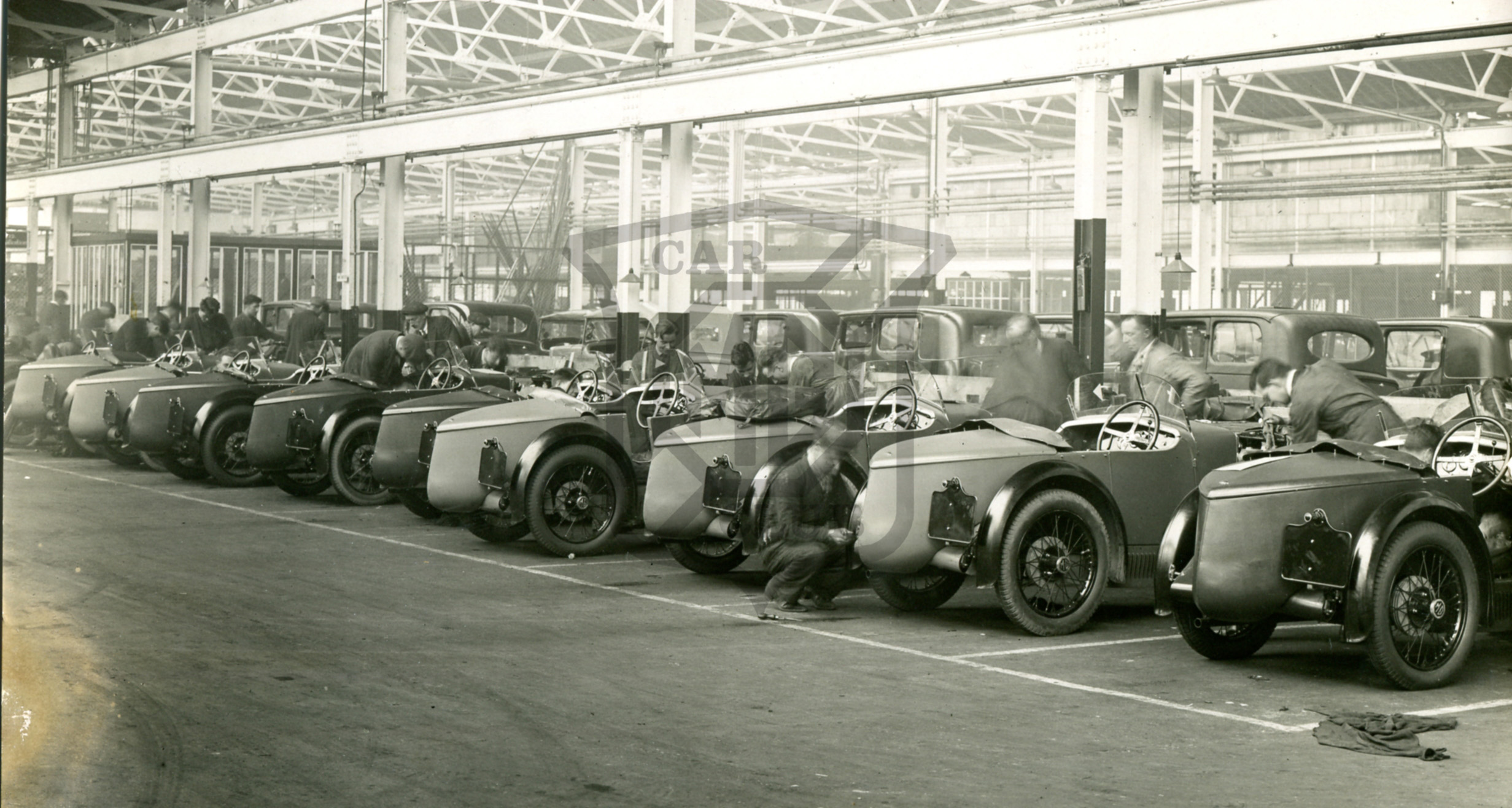
M Types being worked on at the Edmund factory
A potted history of the Triple-M Midgets, from the M Type to the J Type.
Although its stand at the 1930 Motor Show was home to such ‘largesse’ as two new 18/80 models, the Mark 1 Speed and the Mark II De Luxe Saloon, the public perception of MG, a soon-to-be-great marque, was shifting. Indeed, few people were now associating it as a manufacturer of large, well-appointed and relatively costly cars. Rather, MG was being perceived as a company with a penchant for smaller, nimbler, and exceptionally successful and very sporting cars. Cars such as the Magna, Magnette and, importantly, the recently arrived ‘baby’ of the family, the 8/33 M-Type Midget.
8/33 M-Type Midget
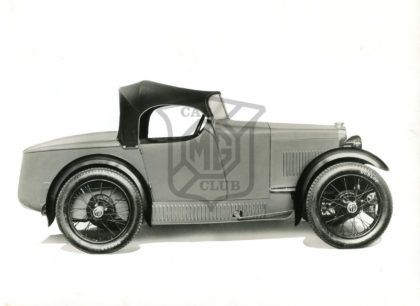
Prototype M Type
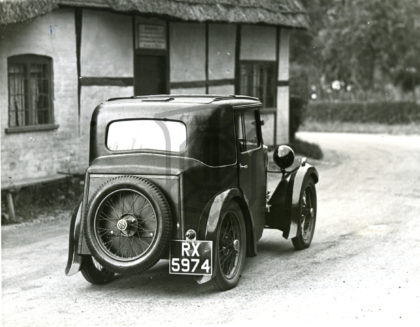
M Type Sportsman Coupe
A 1929 model, the new Midget was first shown to the public at the 1928 Motor Show, at Olympia. Pressure to get the car to the show, as well as into production, meant that its narrow, two-seater ‘boat tail’ body was a very simple affair, being very light and utilising an ash frame that was covered with a Rexine-type fabric. The low, partially-frameless windscreen could be capped with a fabric top that otherwise lived under the rear deck (also home to the spare wheel, tools and luggage).
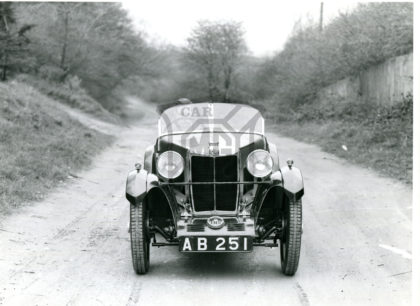
George Tuck driving an M Type, note the registration number
Despite the haste, the Midget turned out rather nicely indeed …and very well received. In fact, The Autocar pronounced: “The MG Midget will make sports car history.” Which, of course, it did. And, it was the car most responsible for pinning MG to the automotive map …as well as setting the company on its road to future successes.
Since most MGs were Morris derivatives, Cecil Kimber’s decision to base the Midget on the recently introduced Morris Minor was hardly surprising. Even so, to ensure that it met with his criteria, in that it had the characteristics of a sports car combined with the low running costs and reliability of a touring car, there were significant differences.
Although the Midget’s chassis was ‘borrowed’ from the Minor, the springs had decreased camber and the steering column was more steeply raked. Suspension was by shackled half-elliptic leaf springs front and rear, Hartford friction shock absorbers, bolt-on 19-inch wire-spoke wheels, and stopping was taken care of by rod-operated (later versions had cables) eight-inch drum brakes.
Power was provided by an 847cc, four-cylinder, ohc engine. Derived (via the Wolseley Ten) from the Type W4A Hispano-Suiza aero engines that Wolseley built under licence during the war, it was a very fine design. The single overhead camshaft was driven by two sets of bevel gears via the vertically mounted generator and the crankshaft was supported by two main bearings. The front main bearing was a ball race design, the rear was a white metal-lined bronze sleeve. Fuelled by a single SU carburettor, this free-spirited creation made 20hp at 4,000rpm, which was fed to the rear wheels through a non-synchro, three-speed manual with a dry clutch and spiral-bevel rear axle.
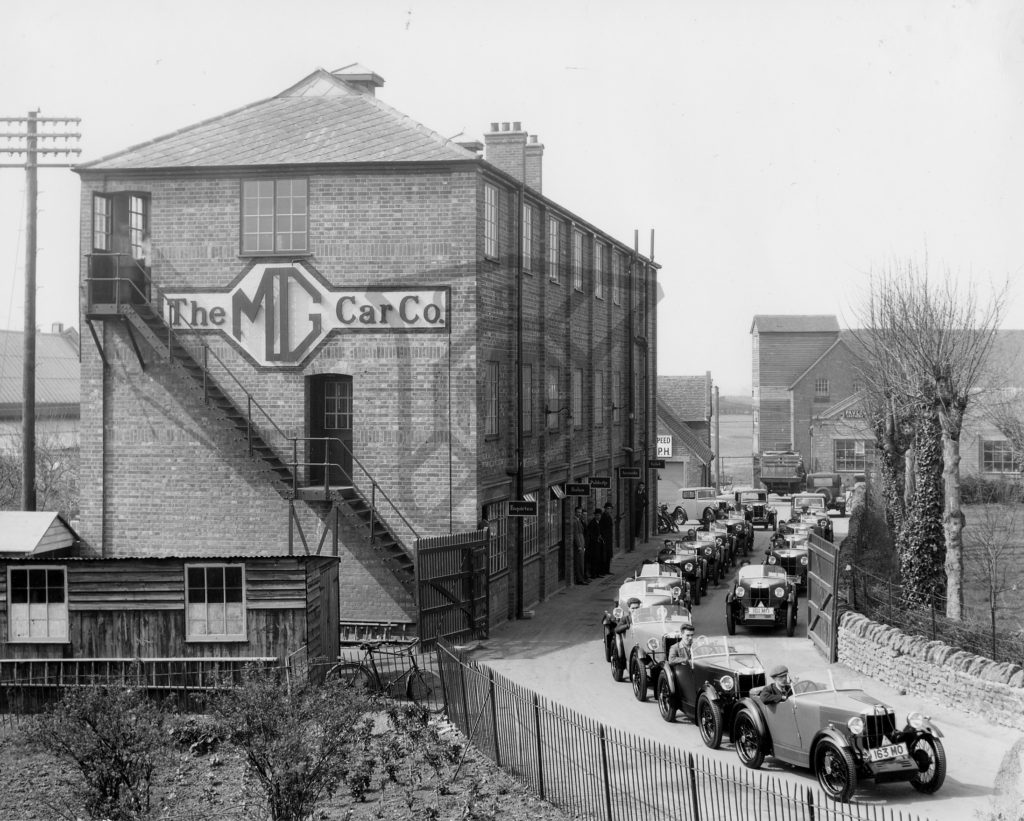
M Types stream down Cemetery Road in Abingdon past the MGA Block
A figure of 20bhp may not seem like much. But, in a car that tipped the scales at a smidge over 10cwt, it was sufficient. The ‘benchmark’ 60mph being achieved very quickly from a standing start. Motoring magazines of the time were full of praise for the Midget, The Autocar stating: “Sixty or sixty five miles an hour are not adventure but delight, acceleration is very brisk, altogether an extraordinary, fascinating little vehicle.”
Late in the production run the fabric body was replaced by a steel-panelled equivalent, although the factory offered a number of fabric body options. MG also offered a closed body, two-seat, ‘Sportsman’s’ Coupe. Few were built, and only a handful survive, but this stylish car (with sunshine roof) made a great impact upon its introduction. One notable customer was Henry Ford’s son, Edsel, and the car created much interest amongst his industry and society acquaintances.
Yet, unsurprisingly, it was the Midget that became the star seller. With its attractive lines, peppy performance, and retailing at a modest £185, the Midget sold like the proverbial hot cakes! And, much of the enthusiasm for the car was due to the rapid growth of motorsport. MG was not only up and running, it was also racing …to the front.
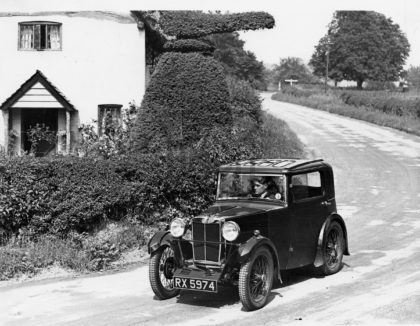
M Type on test, 1928 Sportcar Magazine
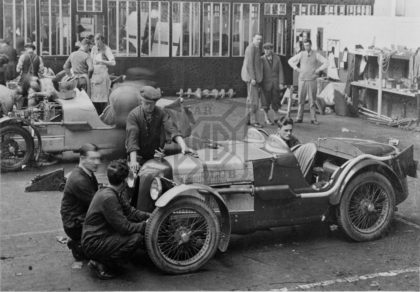
A C Type in preparation in the Racing Department
12/12M
By the tail end on the 1920s, motorsport was being indulged in by more and more privateers, successfully too (five privately-owned M Types gained Gold Medal awards at Brooklands in June 1929, when they competed in The Junior Car Club’s Members’ Day). The ensuing positive publicity inspired Cecil Kimber to channel efforts and resources into motorsport.
A small racing department was formed at Abingdon, its attention initially focussed on developing the Midget for competition use. In 1930 an extra seven bhp was extracted from the 847cc engine and, so powered, and kitted out with special Brooklands exhaust systems, larger fuel tanks and slightly revised bodies with lower cutaway doors, a five-car works team was entered for the Brooklands Double Twelve Race in June 1930.
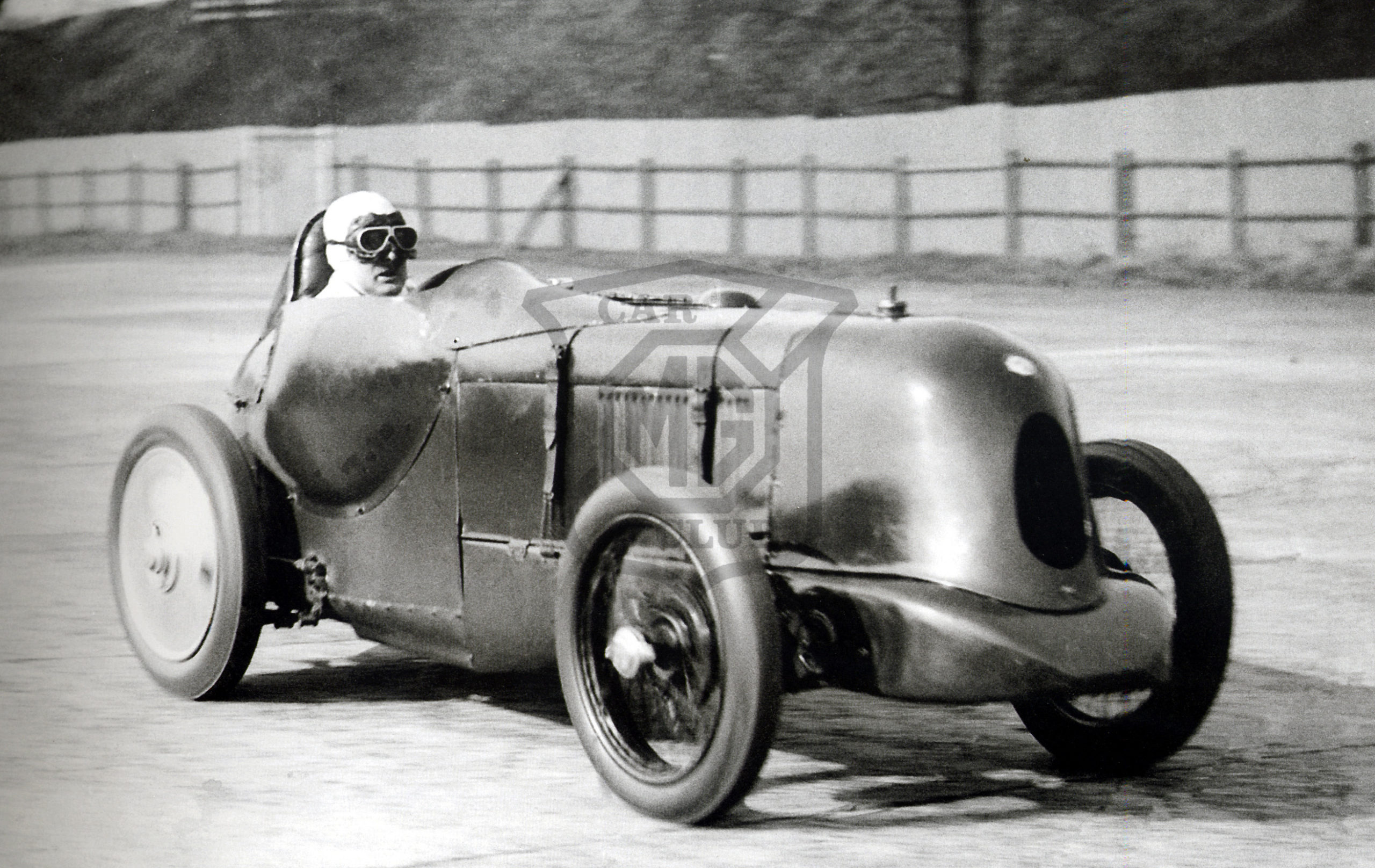
George Eyston in EX120 at speed at Montlhery
Although a good number of their rivals had a distinct power advantage, the five Midgets won through to take the team prize. It was a result that got tongues wagging, garnered many column inches in the motoring press, and undoubtedly helped define MG as a sporting brand. As Motor Sport enthused in its reporting of the race: “MG Midgets surprised everyone with their turn of speed, and winning the team prize was as popular as it was well-deserved.”
As a direct result of its success in the Double Twelve, MG produced a run of 21 12/12 replicas, all paying homage to the five M-Type racing Midgets that had scooped the team prize. Built between August and December 1930, they cost a not-inconsiderable £245, but all were soon snapped up by enthusiastic amateur racing drivers.
And, in a move aimed at inspiring more enthusiasts, and racing enthusiasts, to purchase MGs, it was in late 1930 that Cecil Kimber adopted the slogan ‘Safety Fast’, a slogan which perfectly encapsulated the marque’s values and appeal.
Many improvements were made during the production life of the M-Type Midget, and after appearing at the 1931 Motor Show (for the fourth time) it was eventually phased out in 1932, by which time 3235 had rolled off the production line. Approximately 500 (including eight 12/12s) are thought to have survived.
C-Type
In addition to the production cars, several special Midgets were created (based on the M-Type) for record breaking attempts. During 1930 the factory produced a lightweight prototype, designated EX120, which was destined for MG’s international speed record attempts, and marked the beginning of MG’s hugely successful record-breaking era.
It had a slightly lengthened chassis (6′ 9″ wheelbase) and the main chassis members swept up over the front axle but passed below the rear axle. This new design not only made the car more rigid, it also lowered the centre of gravity. It was rather good.
As was the engine, a much-modified M-Type engine (with its displacement reduced to 743cc) that was boosted by a small Powerplus supercharger. Intent on taking as many MG Class ‘H’ (750cc) records as possible, MG took EX120 to the Autodrome de Montlhéry, just outside Paris. There, late in the evening of February 16 1931, George Eyston took four records, including the record over 5km (at 103.13mph).
To capitalise on these headline-grabbing achievements, a 746cc production version (soon to be dubbed the ‘Montlhéry Midget’) was soon announced. Built along the lines of the record-breaker, and available in blown and unblown form, 14 examples were produced in just 14 days …and just in time for them to compete in the Brooklands Double Twelve.
An incredible feat. And the company, and its dedicated workers, most of whom travelled to the event, were duly rewarded by seeing their handiwork take the first five places, with March/Staniland getting the outright win. The team prize was scooped by MG, too.
The ‘Montlhéry Midget’ was a very fine car indeed, and received many plaudits from the motoring press. Autocar was particularly enamoured and began its November 1931 road test review by saying: “Whatever one’s experience of cars may be, there is a thrill in handling the Montlhéry Mark II Midget, especially the supercharged model. It is not a question of how extremely well this car goes, but, by contrast, how extraordinarily good is this car among cars as a whole.”
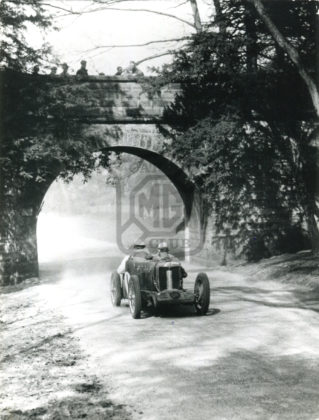
C Type at Donington, 1933
In addition to the record-breaking runs at Montlhéry, there were many other triumphs, including wins in the Irish Grand Prix, Ulster Tourist Trophy, B.R.D.C. 500-mile race etc., helping establish the model as MG’s most successful racing car. A C-Type would also record MG’s first finish at Le Mans, in 1933, winning its class and finishing sixth overall.
The production C-Type Midget, which arrived mid-1931, and which too was developed from the record-breaking EX120, was the first production model to benefit from the improved chassis. Marketed as being ‘race-ready’, the C-Type boasted, amongst other things, a new design of front and rear axle (produced by Wolseley for MG), and the rear springs were mounted in split phosphor bronze trunnions.
This effective set-up, which imbued the C-Type with excellent handling characteristics, not only allowed the springs to slide and rotate as they deflected under loading, it also curbed the lateral movement of the axle. Plus, to highlight this model’s racing intent, MG had even gone so far as to drill and split pin all of the chassis bolts. It was a light car too. When raced, the bodyshell was typically fashioned out of aluminium, and was minus any internal framework, resulting in a weight reduction of around 200lbs. Early cars relied on eight-inch brakes; later cars featured far more effective 12-inch items.
As the engine in EX120 was an expertly crafted and assembled one-off, and fitted with many special parts, it was not production-viable. Instead, the M-Type’s 847cc engine was used as the basis for the C-Type motivation. Even so, almost every design detail was different …and the stroke was reduced, dropping the cubic capacity to 746cc. There were numerous other engine revisions too, mainly concerned with reducing internal friction losses.
As alluded to, the C-Type could be ordered with a factory-fitted supercharger (a Powerplus No. seven running at engine speed), making it the first MG production car to be so equipped. Power was 44bhp blown (37bhp unblown). Part way through the production run, the non-crossflow ‘AA’ cylinder head made way for a new ‘AB’ crossflow design, a design feature that was to remain with MG production until the much-lamented demise of the OHC engine in 1936. Power was 53bhp blown (44 bhp unblown).
The gearbox was a four-speed, straight-cut, ‘crash box’ manufactured by ENV (Morris didn’t have a four-speed gearbox at the time). Many regard this gearbox, although very expensive, to be the nicest ever to be installed in a Triple-M car.
Between May 1931 and June 1932, and including the first batch of 14 cars, 44 C-Types were produced. It’s a much-coveted and sought after car. Currently, the Triple-M Register knows of 24 survivors.
D Type
Introduced at the London Motor Show in October 1931, the D-Type was, in essence, a four-seater M-Type built on a slightly longer C-Type chassis. The engine, transmission and brakes were lifted straight from the M-Type, but the car was equipped with a very attractive open four-seat body with front-hinged, slightly cut-away doors. Due to there being no ‘boot’, the spare wheel was attached to the rear of the body. The front cycle wings were covered on their inside which prevented a lot of the road dirt being sprayed over the driver and front passenger. Usefully, the electrics were upgraded from 6 to 12 volt, which became standard on all of the later Triple-M cars. The D-Type was also available as a four-seat saloon, known as a ‘salonette’ on account of its very compact size. Not many were built.
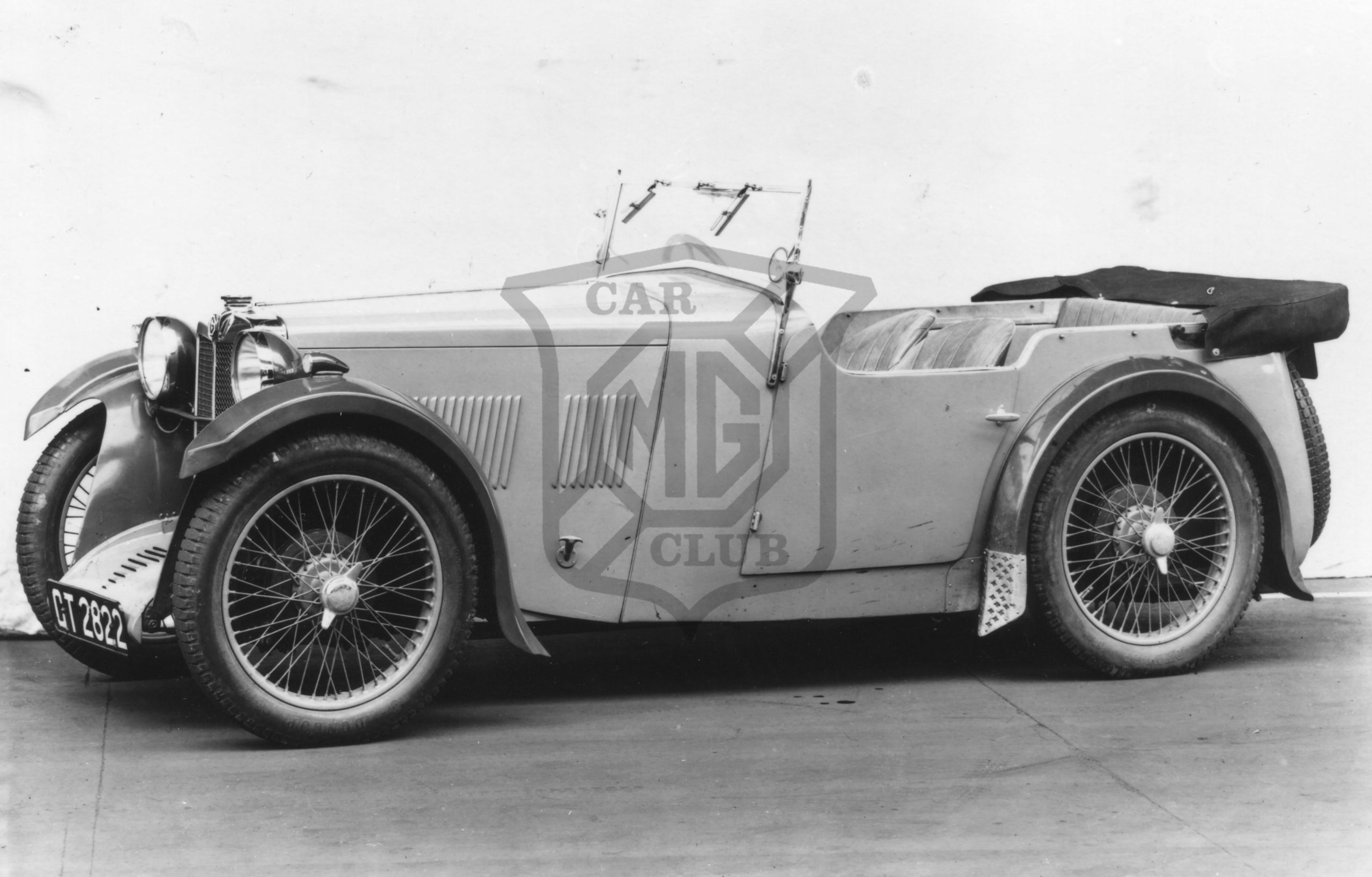
MG D Type Midget
Of course, the D-Type’s extra weight and, potentially, extra passengers, took the edge off performance, leading to it developing a reputation for being a tad ‘gutless’. However, taken in the context of the early 1930s, this criticism is unjust. It was very unusual at that time for any small capacity car to exceed 60 mph, the M-Type being exceptional in that respect, so D-Type owners were probably quite happy with the 45 to 50 mph top speed of their purchase. The biggest disappointment would have been the retention of the M-Type’s three-speed gearbox. To improve driver satisfaction, many owners subsequently fitted a four-speed unit taken from later MG models.
The open four-seater version proved the most popular, with 208 being made, whereas only 37 closed versions (Salonette) found buyers. The four-seat survival rate was good, and many are known to the Register.
J Type
In essence, the J-Series cars, a 1932 introduction, which utilised the same basic chassis design, replaced the M, C and D Types. The chassis, which was lubricated by a Tecalemit oiling system, was a great improvement over its predecessors. Lighter too.
The J1, the four-seater variant, retained the D-Type bodywork, but was blessed with an uprated 36bhp version of the 847cc OHC engine (featuring a crossflow cylinder head and twin SU carburettors). Regrettably, the weak two-bearing crankshaft was carried over.
On the other hand, the Wolseley-derived four-speed gearbox, having being essentially designed for trials use, was rather robust. Plus, it weighed less than the ENV gearbox and was equipped with an aesthetically-pleasing and effective cast aluminium remote gear change mechanism. Production lasted for approximately 12 months with 262 being built. MG also produced an attractive, albeit quite heavy, closed version (Salonette). It was quite popular too, with 117 being sold.
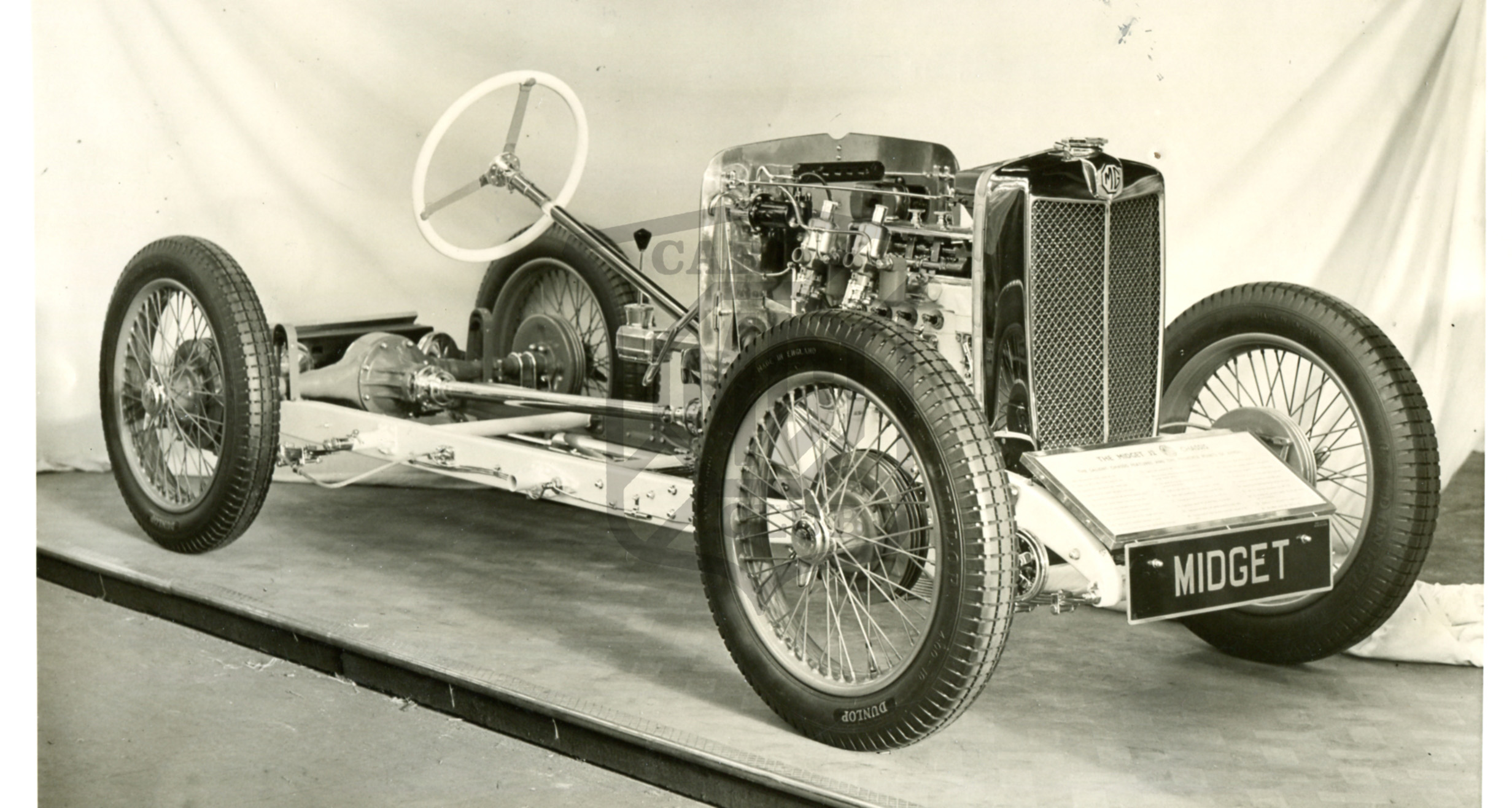
J2 Chassis ready for display at a motorshow
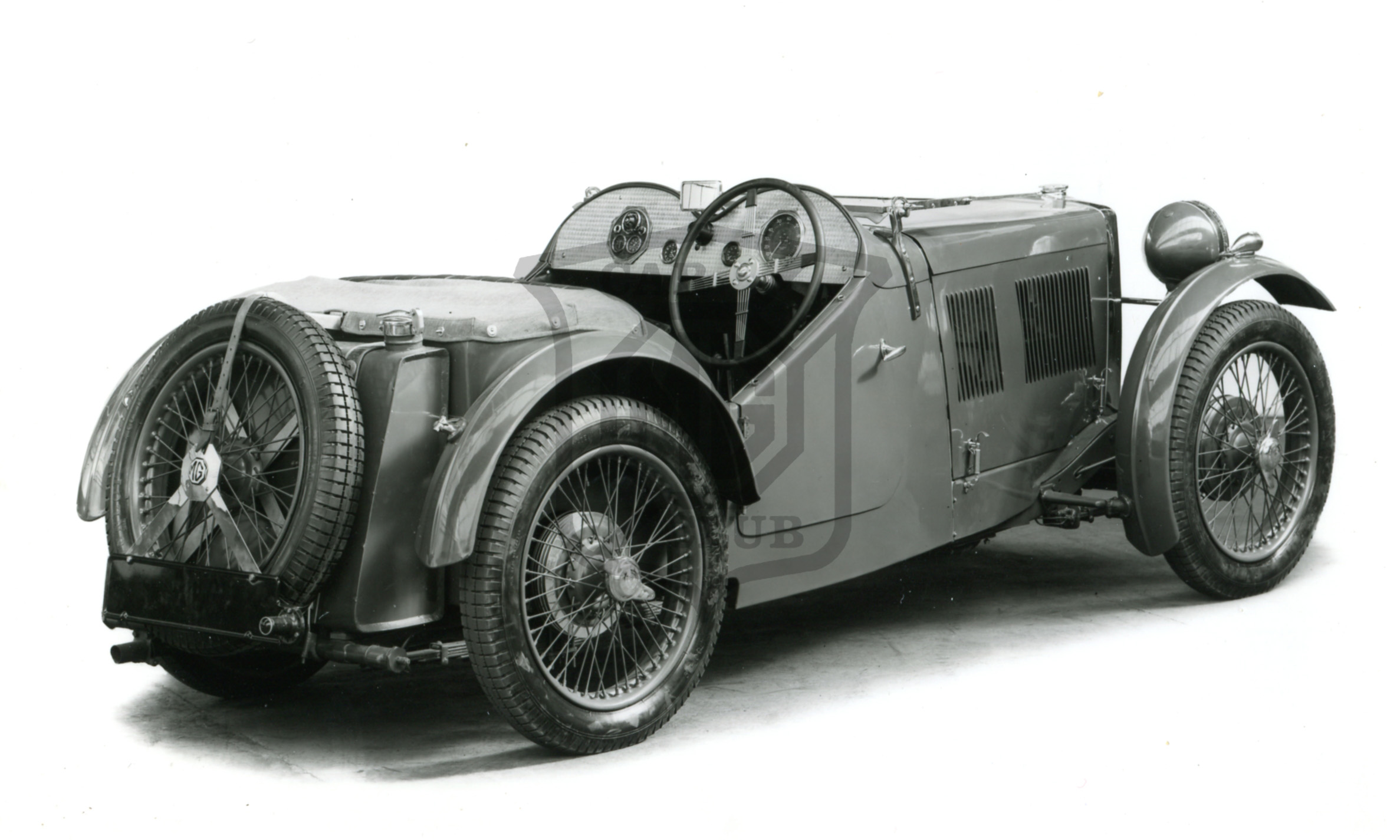
The popular cycle winged MG J2
The very popular J2 (2,061 were produced), the two-seater variant, with its cycle wings, absence of running boards, rear-hinged, cut-away doors, stylish scuttle humps and shapely fuel tank, was a very stylish creation which set the fashion for many future MGs. Circa 1933, the J2’s cycle-type wings were replaced with longer, swept versions.
With more power than the J1, the J2 was also a brisk performer. However, as with the J1, it was stymied by the fragility of its two-bearing crankshaft.
The J3 retained the two-seater bodywork, but was powered by the C-Type’s 746cc engine, complete with a Powerplus 6a supercharger. Power depended on specification, but 70bhp was typical. Just 22 were built.
Marketed as the racing variant of the J-Type range, at a cost of £495, the J4, which had a doorless version of the J2 body, was adorned with all the necessary racing accoutrements. It, too, was powered by a supercharged 746cc engine, complete with an eight-port crossflow head. Mercifully, in light of any racing activities, the crankshaft was counterbalanced. The gearbox was the C-Type’s ENV unit.
To cope with the J4’s prodigious pace, the brakes were 12in drums and, to reduce ‘kickback’, the steering was uprated to incorporate a new, split track rod system. Only nine J4s were made.
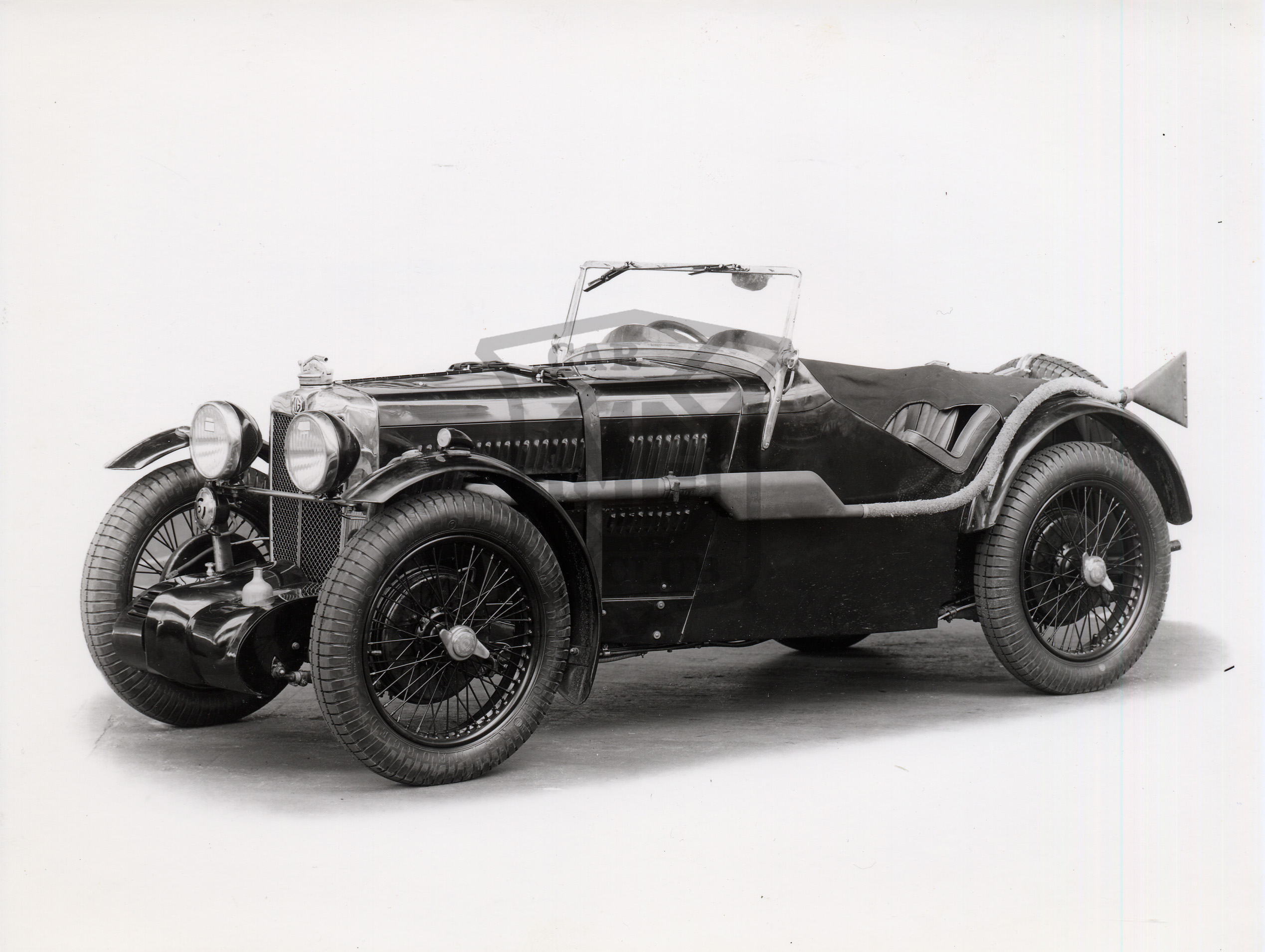
Press photo of a rare MG J4
There is no doubt that the arrival of the J-Series cars had a huge impact on the success of the MG marque, helping cement its reputation as a manufacturer of first-rate sports cars.
In February 1932, Motor Sport wrote: “The MG factory at Abingdon is chiefly notable as a proof of the fact that for real enthusiasm in motoring a sports car is essential. It is furthermore a proof of the fact that the demand for ‘sports cars only’ is enough to cause ever-increasing space to be required for their construction. From the day when Mr. Cecil Kimber first appeared with a hotted-up and very much modified Morris Cowley, and competed so successfully in trials with this car, the marque has never looked back.”
To be continued….

 MG Car Club
MG Car Club
